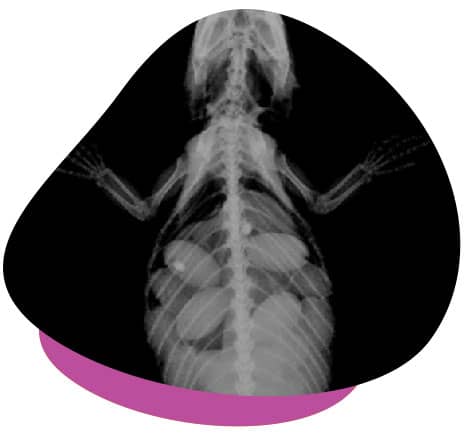Providing a high standard of care is of paramount importance to us, and our facilities and diagnostic equipment allow us to provide this care on a day-to-day basis. Our clinics are very well equipped, and we have access to a fantastic range of laboratory and imaging equipment that make diagnosing what is going wrong with your exotic pet much easier.

Laboratory Testing
Each clinic has a range of the latest laboratory equipment. Some examples of machines we use regularly include a high-tech microscope with a range of staining equipment, a biochemistry machine that allows us to run various blood tests looking at the way your pet’s organs are functioning, a lead testing machine where we can check if your pet has been exposed to lead, urinalysis kits that allow detection of issues with your pet’s urinary system as well as water quality testing equipment for our aquatic patients. These tests can all be performed in-house, providing quick and accurate results.
In addition to this we have access to further testing through a range of external laboratories if required. This generally involves sending off a small amount of blood, urine, tissue (for example if a lump was removed) or a swab taken from your pet. Results for many tests come back quickly allowing us to help get your pet better.
Diagnostic Imaging
Diagnostic imaging allows us to assess inside your pet’s body, including internal structures such as bone, soft tissue and major organs as well as look for foreign objects, obstructions, and lesions. Some of the commonly used imaging modalities we use are listed below:
Digital Radiography (X-Ray)
Digital x-ray is used to assess soft tissue and bones. It helps to confirm the exact location of fractures or breaks, arthritic changes, dental disease, obstructions and foreign objects.
Ultrasonography
Ultrasound is an advanced diagnostic tool used to examine soft tissues and multiple organs, including the liver, bladder, spleen, kidneys, heart, and lungs. Ultrasound is also a great diagnostic tool to assess inflammation, infection, pregnancy and can be used for sexing in some exotic pets.


Specialised Endoscopy
We use a range of specialised endoscopes that work like a tiny camera to allow us to look directly inside your pet’s body cavities and some organs. Endoscopes are an incredible piece of technology that help us to identify inflammation, blockages, cancer, reproductive issues and to remove foreign bodies that have become lodged in nasal passages or ears. The most common size we use is a 2.7mm endoscope which allows us to get into small spaces safely.
Computed tomography (CT)
CT scans allow us to view your pet’s whole body in 3D. CT’s are commonly used to assess internal organs, bone, soft tissues, and blood vessels. They provide much more detail than conventional x-rays by taking multiple cross-sectional images of an entire body region, allowing us to create a 3D reconstruction of that area. Each clinic has access to this amazing technology either in-house or through a local veterinary referral centre.
Hopefully this page has given a bit of an overview of some of the laboratory testing and diagnostic imaging that we can offer. Having this technology available in our clinics allows us to provide your pet with the very best veterinary care.

